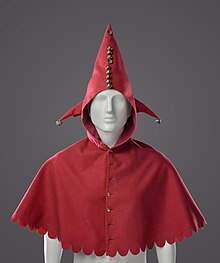| Submission declined on 23 February 2024 by Johannes Maximilian (talk). This submission does not appear to be written in the formal tone expected of an encyclopedia article. Entries should be written from a neutral point of view, and should refer to a range of independent, reliable, published sources. Please rewrite your submission in a more encyclopedic format. Please make sure to avoid peacock terms that promote the subject.
Where to get help
How to improve a draft
You can also browse Wikipedia:Featured articles and Wikipedia:Good articles to find examples of Wikipedia's best writing on topics similar to your proposed article. Improving your odds of a speedy review To improve your odds of a faster review, tag your draft with relevant WikiProject tags using the button below. This will let reviewers know a new draft has been submitted in their area of interest. For instance, if you wrote about a female astronomer, you would want to add the Biography, Astronomy, and Women scientists tags. Editor resources
|  |
 Comment: The text is incomprehensible. Please improve the grammar and style. --Johannes (Talk) (Contribs) (Articles) 14:20, 23 February 2024 (UTC)
Comment: The text is incomprehensible. Please improve the grammar and style. --Johannes (Talk) (Contribs) (Articles) 14:20, 23 February 2024 (UTC)


Stańczyk Hood – museum prop in the possession of the National Museum in Cracow
Jester costume edit
The jester's costume was associated with theatricality resulting from the nature of his work. The jester's outfit may have distinguished itself as early as the 14th century or early in the 15th century.The hood was already an important part of the costume; sometimes it was decorated with donkey ears (called in polish a "kukla") in reference to the legend of King Midas. Buttons and bells appeared at the beginning of the 14th century, their shapes varied, and they became a permanent part of the costume by the end of the century. The dress was called a "sajan" in polish; it was fitted in the upper parts, while below the hips it was supposed to expand. The cut did not have to be regular, symmetrical. The outfit could be girded with a purse, and the jester's feet were sometimes barefoot. The color evolved over time from yellow, green in the 13th and 14th centuries, to multicolored costumes in the 14th century. The red hue in Matejko's works is therefore the result of the painter's invention.[1]
In culture edit
The hood has been portrayed in several of the artist's works: as Stańczyk[2],Prussian Homage. Stańczyk also featured in one of the works of Leon Wyczółkowski, a student of Matejko, with the title Stańczyk.[3]. The figure of a jester in distinctive costume also appeared in productions of Stanisław Wyspiański's Wesele. The figure of Stańczyk was also referred to by Polish performer Wojciech Zamiara[4]. In 2023, the hood became an object advertising the exhibition Matejko. Malarz i Historia in National Museum in Cracow. At the same time was one of the exhibits on display [5].
References edit
- ^ Marta Kowalska (1985), "Stańczyk i Wernyhora. Studium ikonograficzne", Roczniki Humanistyczne (in Polish), vol. 33, no. 4, pp. 19–37, ISSN 2544-5200
- ^ Marta Kłak-Ambrożkiewicz; Michał Haake; Agnieszka Rosales Rodríguez; Dominika Sarkowicz; Marzena Sieklucka; Wojciech Suchocki, eds. (2023), Matejko: malarz i historia = the painter and history, Kraków: Muzeum Narodowe w Krakowie, p. 200, ISBN 978-83-7581-429-3
- ^ "Dwie twarze Stańczyka. Mniej znane oblicza XIX-wiecznego malarstwa", Culture.pl (in Polish)
- ^ "Stańczyk", Centrum Sztuki Współczesnej w Toruniu (in Polish), 2014-07-02
- ^ "Matejko. Malarz i historia - Muzeum Narodowe w Krakowie", Muzeum Narodowe w Krakowie